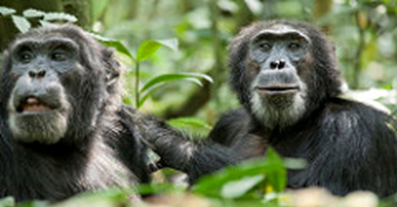Kinesics
Kinesics is the term used to designate all forms of human body language, including gestures, body position and movement, facial expressions, and eye contact. Although all humans can potentially perform these in the same way, different cultures may have different rules about how to use them. For example, eye contact for Americans is highly valued as a way to show we are paying attention and as a means of showing respect. But for the Japanese, eye contact is usually inappropriate, especially between two people of different social statuses. The lower status person must look down and avoid eye contact to show respect for the higher status person.
Definition: kinesics
The study of all forms of human body language, including gestures, body position and movement, facial expressions, and eye contact.
Facial expressions can convey a host of messages, usually related to the person’s attitude or emotional state. Hand gestures may convey unconscious messages, or constitute deliberate messages that can replace or emphasize verbal ones.
Proxemics
Proxemics is the study of the social use of space, specifically the distance an individual tries to maintain around himself in interactions with others. The size of the “space bubble” depends on a number of social factors, including the relationship between the two people, their relative status, their gender and age, their current attitude toward each other, and above all their culture. In some cultures, such as in Brazil, people typically interact in a relatively close physical space, usually along with a lot of touching. Other cultures, like the Japanese, prefer to maintain a greater distance with a minimum amount of touching or none at all. If one person stands too far away from the other according to cultural standards, it might convey the message of emotional distance. If a person invades the culturally recognized space bubble of another, it could mean a threat. Or, it might show a desire for a closer relationship. It all depends on who is involved.
Definition: proxemics
The study of the social use of space, including the amount of space an individual tries to maintain around himself in his interactions with others.
Paralanguage
Paralanguage refers to those characteristics of speech beyond the actual words spoken. These include the features that are inherent to all speech: pitch, loudness, and tempo or duration of the sounds. Varying pitch can convey any number of messages: a question, sarcasm, defiance, surprise, confidence or lack of it, impatience, and many other often subtle connotations. An utterance that is shouted at close range usually conveys an emotional element, such as anger or urgency. A word or syllable that is held for an undue amount of time can intensify the impact of that word. For example, compare “It’s beautiful” versus It’s beauuuuu-tiful!” Often the latter type of expression is further emphasized by extra loudness of the syllable, and perhaps higher pitch; all can serve to make a part of the utterance more important. Other paralinguistic features that often accompany speech might be a chuckle, a sigh or sob, deliberate throat clearing, and many other non-verbal sounds like “hm,” “oh,” “ah,” and “um.”
Definition: paralanguage
Those characteristics of speech beyond the actual words spoken, such as pitch, loudness, tempo.
Most non-verbal behaviors are unconsciously performed and not noticed unless someone violates the cultural standards for them. In fact, a deliberate violation itself can convey meaning. Other non-verbal behaviors are done consciously like the U.S. gestures that indicate approval, such as thumbs up, or making a circle with your thumb and forefinger—“OK.” Other examples are waving at someone or putting a forefinger to your lips to quiet another person. Many of these deliberate gestures have different meanings (or no meaning at all) in other cultures. For example, the gestures of approval in U.S. culture mentioned above may be obscene or negative gestures in another culture.
Try This
As an experiment in the power of non-verbal communication, try violating one of the cultural rules for proxemics or eye contact with a person you know. Choosing your “guinea pigs” carefully (they might get mad at you!), try standing or sitting a little closer or farther away from them than you usually would for a period of time, until they notice (and they will notice). Or, you could choose to give them a bit too much eye contact, or too little, while you are conversing with them. Note how they react to your behavior and how long it takes them to notice.


